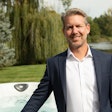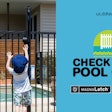
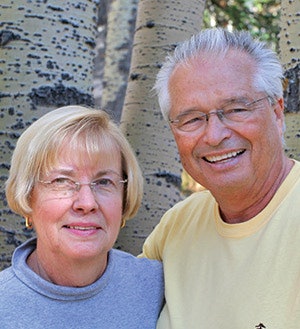 Jack Manilla with wife Paula Manilla - co-owners of Portofino Pool Services in Jacksonville, Fla.
Jack Manilla with wife Paula Manilla - co-owners of Portofino Pool Services in Jacksonville, Fla.
On November 1, Jack Manilla will begin his first term as chair of the APSP Board of Directors. It'll be the culmination of more than 20 years of service to the industry, both as owner of Portofino Pool Services in Jacksonville, Fla., and as a volunteer on regional and national association committees.
Manilla recently carved time out of his busy schedule to answer questions about what prepared him for the job, the unification process between APSP and NSPF, and whether things could ever return to the glory days before the market meltdown almost 10 years ago.
You've got just about a month before you start the job. How do you feel?
Well, I've been on a long journey, if you will. I've been in aquatics for 20-some years now, and when I first got started I saw that there was a great need for continued professionalism within the industry. And so, as I worked within the industry and got my own business going, I took various classes to increase my own personal knowledge. In addition, since I've had a strong interesting in education, training and learning throughout my life, I wanted to share what I'd learned and I began teaching my own employees.
I see in that 20-year time period that the industry has advanced in a number of areas through education and training. I want to continue that effort because it satisfies a very personal inner drive and passion, and this gives me an opportunity to do just that.
How much time will the job take?
Well, it's going to be substantial. One of the benefits of being chair-elect for this past year is that I shadowed the current chair, Rich Garbee, and so he and I were joined at the hip and I got to see a lot of what goes on within the association. I won't necessarily travel as much as he did — he has the benefit of being in manufacturing so he's participating in a lot of the shows. But it'll vary. I'm confident that with the dedicated Board and staff, my focus will be on strategic issues for the association and the industry.
The association has been conducting consumer research over the last two years. How has that been going?
It's gone very well, and we've gotten real, actionablte answers out of it. There's always valuable information that comes out of these surveys and we have to do everything we can to understand the audience we serve. Ultimately it's the end-users and consumers that we really need to be concerned with. We tend to become myopic. Too often we're talking to each other — say manufacturers talking to dealers or dealers talking to contractors — and never really taking a step back and saying, "Hey, it's really the people buying the pool or spa or getting one of them maintained or restored that really matters here." A lot of the time the things that we talk about are internal business issues that have nothing to do with what the end-users' needs are, what they want and whether we are offering the necessary solutions for them. Those are the things that come out of research like this, and those are things that I'll be concerned with as chair.
Our business is largely dependent on discretionary dollars, and the industries we're competing against are seeking those same dollars — people are deciding between buying a new TV set for the house of putting a down payment on a pool, for instance. So, without getting into the specifics of what these types of surveys tell us, I think the bigger view is to get the intelligence and to get a large number people in the association and the staff to understand it's these end-users who pay the bills for us and we need to focus on their needs and wants. Then we have to focus all of our messaging and communication toward those people.
Talk about the unification of APSP and NSPF. That must be one of the biggest challenges you'll face in your term.
From early on I was asked to chair the unification committee for APSP, which is made up of five board members, including myself. Then in turn the board at NSPF did the same thing, and they named Scot Hunsaker chair. Scot and I have been closely communicating throughout the entire process.
Initially Scot and I collaborated and researched a number of management consultants that deal with organization development, and mergers and acquisitions, of non-profits. We searched far and wide and came up with 18 or 20 candidates to help us through the process. We invited them to respond to a request for qualifications, and half responded. Eventually we got it down to the final four and brought them to Chicago to meet face to face with the joint unification committee, and from that we selected a top-notch analyst to lead the effort. Both boards voted to expend funds for that purpose, and so for the last few months that firm has been working on the unification.
I'm very involved personally with this. Of course, if we are all in agreement and both boards vote at the end of the process to back their decisions, then the next steps involve implementing those recommendations.
You've got locations in Alexandria, Va., and Colorado Springs, Co. Any idea how that will work out?
We'll sift through everything. There certainly will be economies to be gained by having one location and one facility, but that's part of what we're asking the management consultants about. They'll do an evaluation on our facilities and staff at APSP and on the facilities and staff at NSPF, then they'll come through with a pros and cons, or SWOT analysis (strengths, weaknesses, opportunities, and threats), so we'll have black-and-white data in front of us to make an informed decision. So I really can't give you an answer on that and how it will work out. I'm sure anyone you could talk to would have personal opinions about what they'd like to see, or wouldn't like to see, but I'm more inclined to look at it objectively and think about what would be the best business decision.
Is there a lot of overlap on what each group does?
Really, there isn't much overlap. The APSP is a trade association with members that focus on protecting and growing the industry and getting products to the end user. APSP writes all of the standards that govern the industry. NSPF is largely involved with research, improving health and safety, and promoting swim education, that type of thing. One of the large assets that they have is the CPO program with approximately 3,000 instructors across the world. And APSP has very deep and rich intellectual capital in terms of knowledge and information and research that we do. So it could be a great blend if you view APSP as sort of like a manufacturer producing a product and NSPF as a distribution system to deliver that product to the marketplace. So that's one of the big powers and big benefits for APSP — to be able to reach a much broader piece of the entire aquatics industry.
Maybe that fact has helped keep things friendly between the boards.
I think that's true, and it has been very pleasant. You'd think we've always been on the same board from the beginning. Scot and his board members and me and my fellow board members have mixed well. I've been very impressed with the talents, experience, and skills that they bring to the table, and we've enjoyed working very much with all the NSPF folks. I think they'd say they feel the same way about us. It's been very fulfilling. We're not picking winners and losers, here. It's actually been a pleasant and edifying experience.
Let's say this unification goes through without a hitch. What other challenges does the industry face over the next decade?
I'll answer that in a few ways. First of all, I think what happens this November politically, as far as who becomes president and who controls congress, is going to cast the lot for the future. It's that critical, in my view, and it could affect our industry in a lot of ways. So, depending on who comes into power, you go down a couple of different avenues. If it goes the Democratic way, we see more regulation, more encroachment into our industry, more compliance issues. If you go the other way and the republicans come in maybe you'll see some deregulation and elimination of some of the bureaucracy.
Now, once we get past that we just have to deal with the cards we're given.
Beyond the political issues, what we'd like to see happen in the aquatics industry is to better educate the public about the benefits of physical fitness through swimming. You can play that card pretty strongly, and I think it would be a very powerful message on the one hand, but on the other hand there's the enjoyment and enrichment that comes from being around water, being immersed in water and observing water and the movement of water. So you can really play up the wholesomeness of this way of life. I sincerely hope that through the unification, more pools are built, more hot tubs installed and more people are using pools at home, in hotels, competition pools, etc. Ideally that's what I'd like to see. I'd like swimming to be on a par with the other sports in colleges and high schools, too.
Should the goal be to get back to the numbers the industry saw back in 2007 and before?
First of all, our industry, especially pool construction, is driven by the economy. So if the economy is good and people have discretionary dollars, then we've got an opportunity to capture those dollars and it becomes our job as an industry to convince the end-users to spend their money on our products. In the last couple of years I think things have picked up and that we're advancing, but it's nowhere near where we were at the high point. But depending on how the economy goes over the next decade, I think we could get back there. I really do. That's assuming the right messaging and an economy where more people can afford our products. And that's what I'm focusing on in my term.

























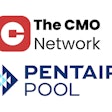


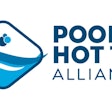
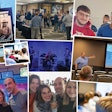


![IPSSA’s incoming President Michael Denham [left], Rose Smoot, IPSSA Executive Director [center] and the outgoing President, Todd Starner [right].](https://img.aquamagazine.com/files/base/abmedia/all/image/2024/04/New_IncomingPres_MikeDenham_RoseSmoot_outgoing_president_ToddStarner_IMG_3920_copy.662682e0cbd3a.png?auto=format%2Ccompress&fit=crop&h=112&q=70&rect=0%2C345%2C3024%2C1701&w=112)
